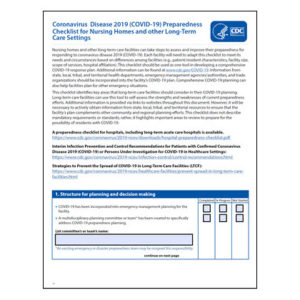Apprenticeships in Senior Care
On-the-job training can improve quality of care and incentivize good workers to stay put.
It’s no secret that hiring and retaining good employees is an ongoing challenge for many senior care facilities. But a growing number of them are turning to apprenticeship programs to help train and keep the best staff members over the long haul.
These programs can take a variety of forms, and one of the more robust in the field is at Trilogy Health Services, a senior care company with 115 campuses around the Midwest.

Todd Schmeideler, senior vice president of foundation and workforce development at Trilogy Health Services
Todd Schmeideler, senior vice president of foundation and workforce development at Trilogy, says the company has embraced the apprenticeship model, with great results.
Why Trilogy’s Program Is Ahead of the Curve
The program launched in January 2018 with nursing aide and culinary tracks. “The primary reason we focused on those populations was those are the largest and two of the highest turnover populations,” Schmeideler explains.
Reducing those turnover rates was “absolutely crucial,” Schmeideler says, and by soliciting feedback from employees, Trilogy learned that “what they needed from us was pretty simple – opportunities to learn and grow more and serve residents better,” he says.
Though the company had already been encouraging employees to “grow in skill in knowledge, this just made us more able to be more transparent about it. Now everybody has the same opportunities to grow and get pay raises. It encourages the employee to take their career into their own hands.”
Nearly two years into the establishment of the program, Trilogy is “all in” with the apprenticeship model, Schmeideler says. Apprentices can get through the program in about a year, but the timing is really up to the employee. “They don’t have to work off a timeline. The certifications are completed online on their own time.” On-the-job, hands-on training occurs as part of their day-to-day workflow. As the apprentice moves up through the various levels of the program, he or she gets a pay raise with each step.
The results have been remarkable for Trilogy. In July 2019, Schmeideler conducted a retention analysis of the company’s nursing aides. “That’s our biggest program. It’s also the highest turnover group for us.” In that analysis, he found that among active employees, meaning those who’d received a certification in the past 12 months, “we have an 80% retention rate for nursing aides.” For nursing aides who hadn’t earned a certification in the past 12 months, the retention rate was just 51%.
Grants May Be Available
If you’re looking to get an apprenticeship program off the ground, there may be grant programs available to help you get started.

Emily Berger, director of workforce development and member services for the Indiana Health Care Association / Indiana Center for Assisted Living
Emily Berger, director of workforce development and member services for the Indiana Health Care Association / Indiana Center for Assisted Living, and executive director of the Indiana Health Care Foundation says her organization “serves as the middle man,” helping manage and distribute grants from the Department of Labor, a state-level organization, to individual senior living companies.
IHCA/INCAL helps connect members to grant money to establish apprenticeship programs, and has had varying levels of success with different long-term care companies. Berger says success largely comes down to having someone in the senior care facility available and willing to champion the initiative and keep it moving forward. At Trilogy, that person is Schmeideler, and Berger says Trilogy’s program is “way ahead of the curve” in terms of long-term care apprenticeship programs.
Apprenticeships Can Boost Retention
But she notes that it’s something other long-term care facilities should consider. Establishing an apprenticeship program could be a solution to the near-ubiquitous issue of retaining workers in the long-term care space. Rather than seeing good employees leave for bigger paychecks or career advancement opportunities elsewhere, you can keep them in your facility while improving their skills and their ability to care for residents.
By investing in talented staff, you can build good will and better outcomes for residents. Reducing turnover can also lead to cost savings for your company. “I think in long-term care, people have been so focused on meeting the regulatory requirement of what a job position entails. An apprenticeship is kind of serving as that next step of going above and beyond what that basic training entails,” Berger explains.
The apprenticeship model can be a very useful means of not just training employees, but also retaining and rewarding those who do well. “It’s showing them very transparently what that training looks like and what benefits or wage progressions are available,” to employees who advance through the program, she says.
It’s Not Just About the Apprentice
When selecting participants for an apprenticeship program, remember that it’s not just about the trainees. The program can be a benefit to the mentors, too. Called journeymen in apprentice parlance, these mentors don’t have to be directors of nursing or the longest-serving members of your staff. Rather, think carefully about which employees in your facility might make good leaders and have wisdom to offer newer employees, Berger says.

Elaine K. Howley is a freelance journalist for various publications. An award-winning writer specializing in health, fitness, sports and history, her work has appeared in numerous print and online publications, including U.S. News, AARP.org, espnW, SWIMMER magazine and Atlas Obscura. She’s also a world-record holding marathon swimmer with a passion for animals and beer. Contact her via her website: elainekhowley.com.
Related Articles
Topics: Administration , Executive Leadership , Featured Articles , Leadership , Staffing











